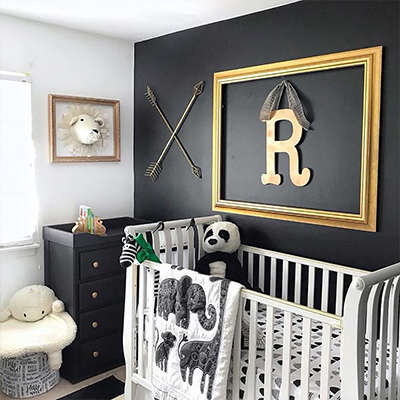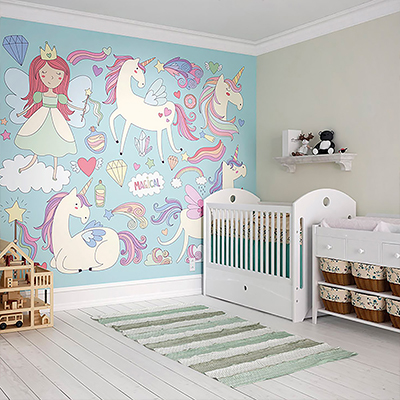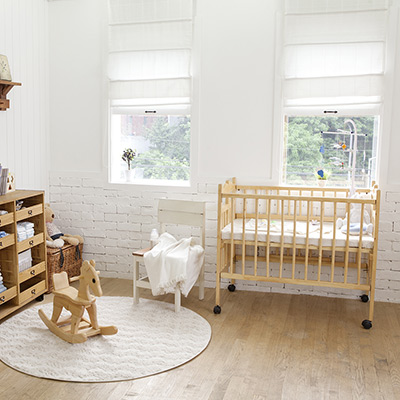How to Add Childproofing to a Home
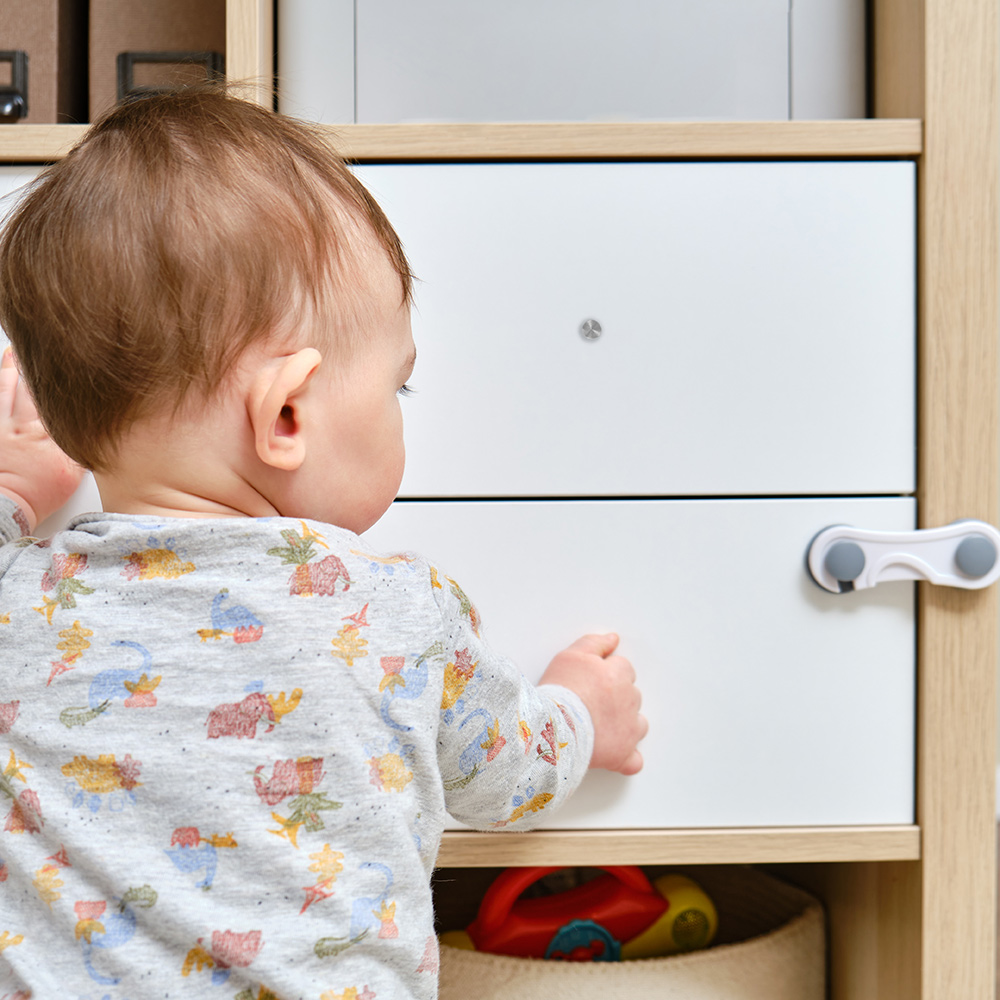
Last updated September 7, 2023
When welcome a new baby, or preparing for a child's first steps, it's important to begin childproofing areas of your home. Two of the biggest hazards for babies and toddlers in a home are poisoning and falling. But there are other concerns such as choking on small items, electrical outlets and falling objects. This step-by-step guide teaches you how to protect the little ones in your home from injury.
Difficulty:
Beginner
Duration:
Under 2 hours
Table of Contents
Types of Childproof Latches
Installing Latches
Types of Childproof Gates
Installing a Childproof Gate
Safeguarding Electrical Outlets
Anchor Furniture
Types of Childproof Latches

There are many child-proof safety lock options available for cabinets and drawers. Not all locks are suitable for every cabinet or drawer, so you need to know how yours are designed before you select one.
There are two methods of installation: using adhesives or hardware with screws.
Here are some commonly used child-lock options:
Here are some commonly used child-lock options:
- Magnetic locks use a magnetic key to disconnect the latch from the catch inside the cabinet.
- Latch systems use a catch on the inside and a latch on the door. Depress the latch when the door is slightly ajar to release it from the catch.
- Double-door slide lock systems use a U-shaped piece with notches along both prongs and a clasp to secure them against the cabinet.
- An appliance latch system is a single strap with a latch at the end that slides into the catch.
Installing Latches
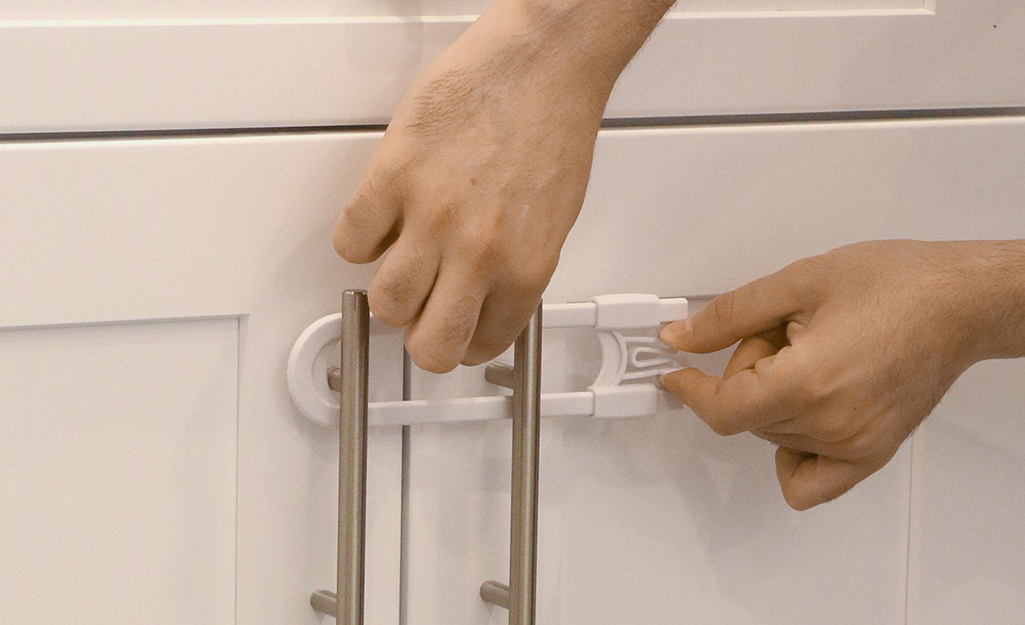
- Pre-drill the catch holes with a power drill. Using a hand screwdriver, secure the screws included with the latch kit to the cabinet.
- Next, position the latch on the door so it lines up with the catch when it's closed. Pre-drill the holes, then secure the screws into the latch.
- The strap and catch system is a simple installation. With the strap attached to the catch, position the strap on the appliance near the top, out of reach. Remove the backings on the adhesive strips and affix the strap to the appliance.
Types of Childproof Gates
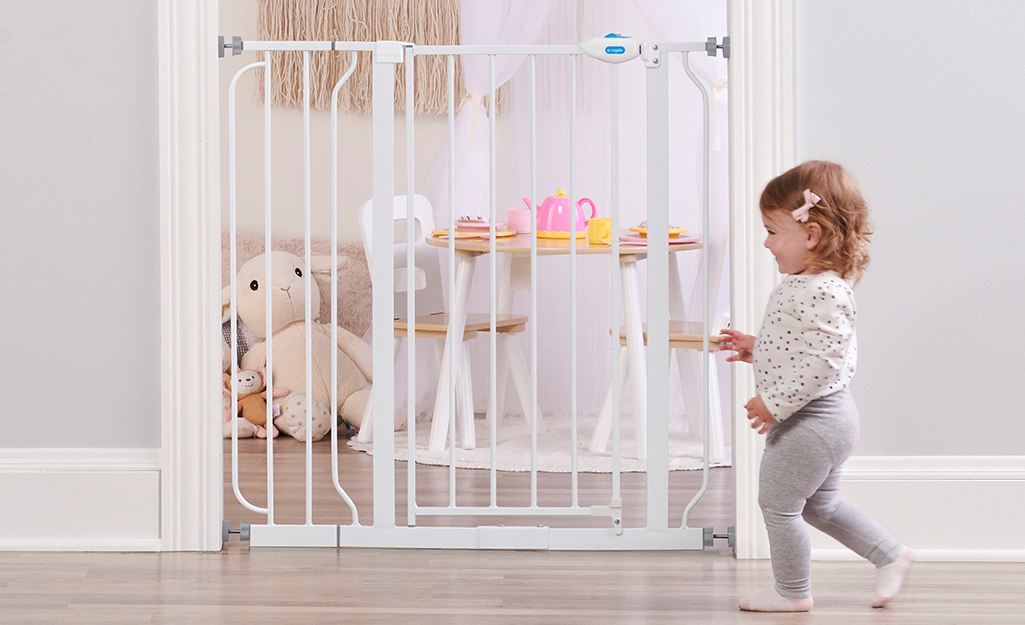
There are two types of child-proof gates: pressure mounted and hardware mounted.
- Pressure-mounted gates do not require hardware or permanent installation. They can move from one door frame or hallway to the next.
- With hardware-mounted gates, both sides of the gate attach to walls with screws drilled into studs. Hardware-mounted gates are the secure choice for stairways.
Installing a Childproof Gate
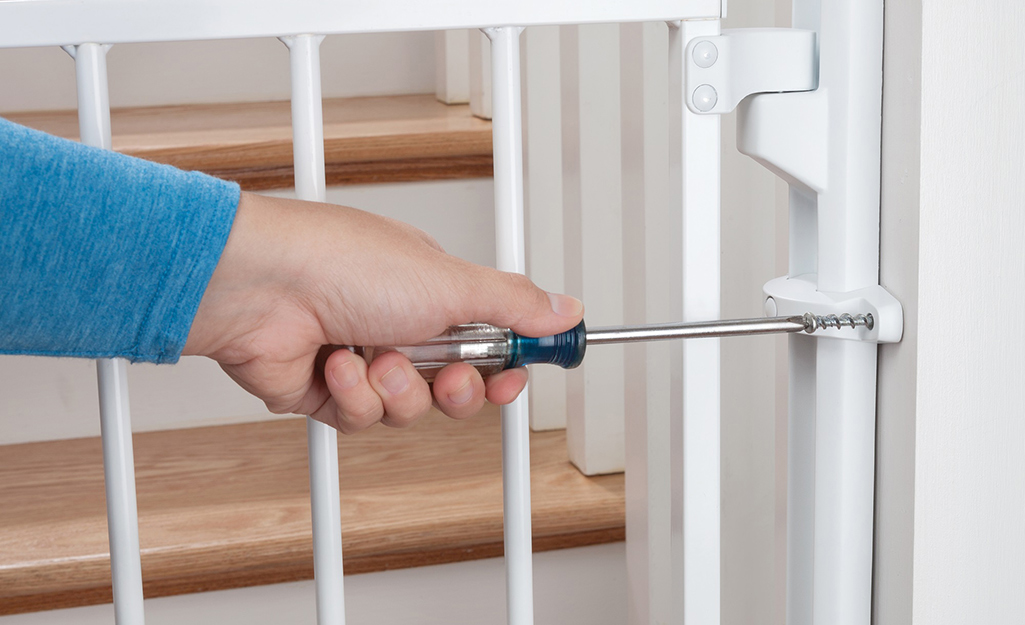
- To child-proof against accidental falls, install a gate at the top and the bottom of the stairway. You need two solid attachment points. A wall and a newel post are sturdy options. Newel posts are the posts at the top, bottom, midway points and corners of bannister stairways. These points should be directly across from each other so the gate is square to the wall when installed. The gate has to be square for the latch to work.
- Use a screwdriver and the included screws to attach the gate on one side to the wall. Keeping the gate square to the wall, attach the other side to the newel or opposite wall. Each gate has different tightening systems. Tighten the gate following the instructions provided by the manufacturer.
- There's one more layer of protection to add to your stairway if you have banisters. A banister roll is a length of plastic that attaches to the newel posts and runs behind the banisters. This prevents children, pets and items from slipping though.
Safeguarding Electrical Outlets
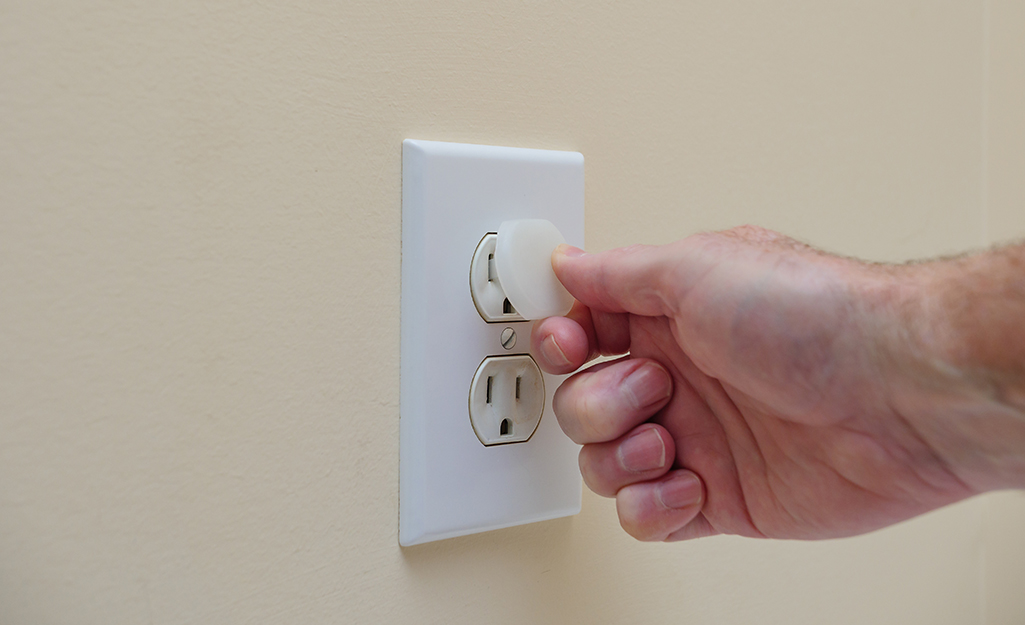
There are three options for electrical outlet protection: A plug cap, a tamper-resistant wall plate and tamper-resistant outlets.
- Plug caps are wallet-friendly and easy to install. Plug and unplug as needed.
- Tamper-resistant wall plates are easy to install. Use a flat-head screwdriver to remove the center screw in the wall plate that covers the outlet. Use a firm putty knife to loosen the wall plate from the wall. Place the new tamper-resistant wall plate over the outlet. Secure it into place using the screw included in the package.
- Tamper-resistant outlets replace your existing outlets. Only two-prong pressure opens tamper-resistant outlets. Most newly constructed homes have tamper-resistant outlets installed.
Safety Tip: Plug caps are a choking hazard. Keep them out of reach from small children when they are not in use.
Anchor Furniture

Use safety straps to anchor your furniture to the wall to eliminate the risk of tipping and crushing a young person. Use a stud finder to locate a wall stud. Secure one end of the strap to the stud with a screwdriver and screw. Secure the other end of the strap to the furniture using a wood screw.
To secure a flat-screen television, attach one mounting strap to the mounting holes on the back of the television, using the machine screws provided. Use wood screws to attach the other mounting strap to the furniture below the television. Bring the two straps together until tight.
Baby-proofing your home can be a quick and easy task when you have the right tools and information. Follow this step-by-step guide to get your home set up today. Download the Home Depot Mobile App and find products fast with image search. Snap a picture of an item you like and we’ll show you similar products.

